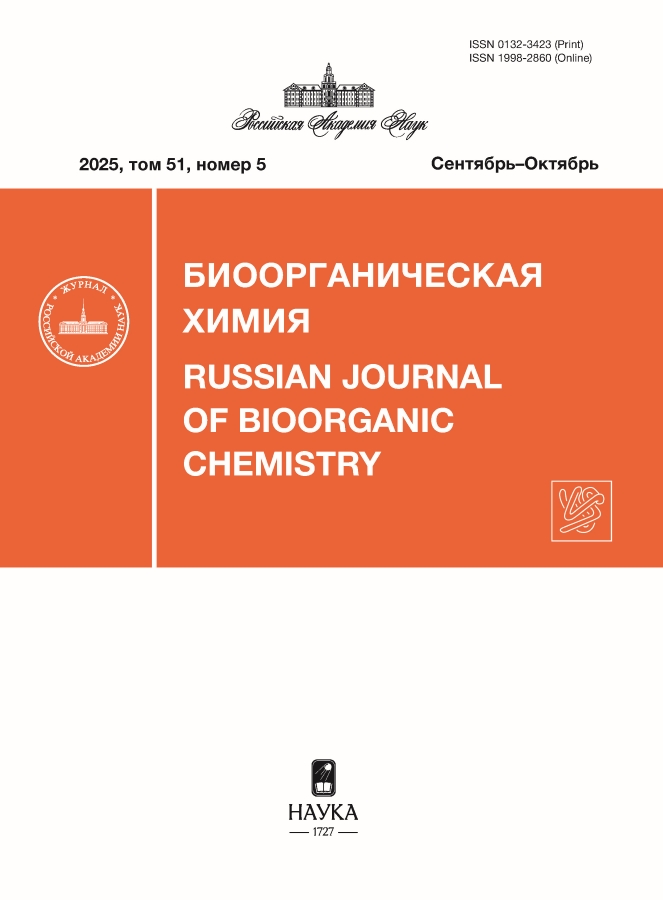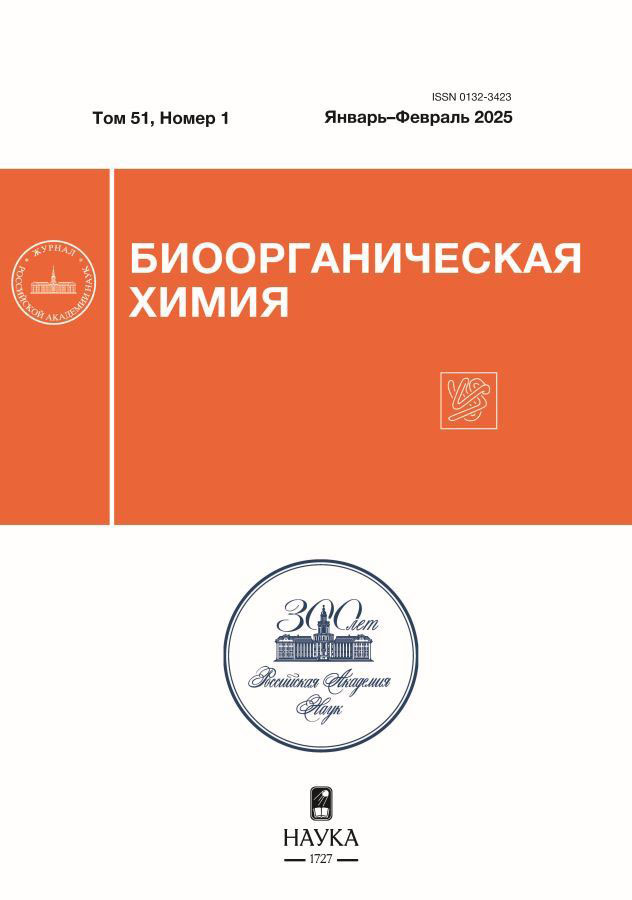Live-cell visualization of histone modification using bimolecular complementation
- Authors: Stepanov A.I.1,2, Putlyaeva L.V.1,2, Shuvaeva A.A.3, Andrushkin M.A.4, Baranov M.S.2,4, Gurskaya N.G.1,2,4, Lukyanov K.A.2
-
Affiliations:
- Skolkovo Institute of Science and Technology
- Shemyakin–Ovchinnikov Institute of Bioorganic Chemistry
- Moscow Institute of Physics and Technology
- Pirogov Russian National Research Medical University
- Issue: Vol 51, No 1 (2025)
- Pages: 72-81
- Section: Articles
- URL: https://transsyst.ru/0132-3423/article/view/683098
- DOI: https://doi.org/10.31857/S0132342325010074
- EDN: https://elibrary.ru/LZMQKQ
- ID: 683098
Cite item
Abstract
Epigenetic modifications of histones in human, animal, and other eukaryotic cells play a crucial role in regulating gene expression. Histones can undergo a variety of post-translational modifications in different combinations, including methylation, acetylation, phosphorylation, and others at various amino acid residues, which determine the functional state of a given chromatin locus. Changes in epigenetic modifications accompany all normal and pathological cellular processes, including proliferation, differentiation, cancer transformation, and more. Currently, the development and application of new methods for analyzing the epigenome at the single-cell level, including in live cells, are particularly relevant. In this study, new sensor systems were developed for visualizing epigenetic modifications H3K9me3 (trimethylated Lys9), H3K9ac (acetylated Lys9), and the spatial colocalization of H3K9me3 with H3K9ac, based on fluorogenic dyes. The creation of these sensors involved the use of splitFAST system as well as the histone natural reader domains MPP8 and AF9. Adding the fluorogens HMBR and N871b to the cell medium allowed for the detection of clearly distinguishable fluorescence patterns in the green and red channels, respectively. We also performed the analysis of the obtained fluorescent images using the LiveMIEL (Live-cell Microscopic Imaging of Epigenetic Landscape) computational method. Clustering of the resulting data showed agreement with the expected class labels corresponding to the presence of H3K9me3, H3K9ac, and the spatial colocalization of H3K9me3 and H3K9ac in the nucleus. The developed sensors can be effectively used to study histone modifications in various cellular processes, as well as in investigating disease development mechanisms.
Full Text
About the authors
A. I. Stepanov
Skolkovo Institute of Science and Technology; Shemyakin–Ovchinnikov Institute of Bioorganic Chemistry
Author for correspondence.
Email: gurskayanadya@gmail.com
Russian Federation, Moscow; Moscow
L. V. Putlyaeva
Skolkovo Institute of Science and Technology; Shemyakin–Ovchinnikov Institute of Bioorganic Chemistry
Email: gurskayanadya@gmail.com
Russian Federation, Moscow; Moscow
A. A. Shuvaeva
Moscow Institute of Physics and Technology
Email: gurskayanadya@gmail.com
Russian Federation, Moscow
M. A. Andrushkin
Pirogov Russian National Research Medical University
Email: gurskayanadya@gmail.com
Russian Federation, Moscow
M. S. Baranov
Shemyakin–Ovchinnikov Institute of Bioorganic Chemistry; Pirogov Russian National Research Medical University
Email: gurskayanadya@gmail.com
Russian Federation, Moscow; Moscow
N. G. Gurskaya
Skolkovo Institute of Science and Technology; Shemyakin–Ovchinnikov Institute of Bioorganic Chemistry; Pirogov Russian National Research Medical University
Email: gurskayanadya@gmail.com
Russian Federation, Moscow; Moscow; Moscow
K. A. Lukyanov
Shemyakin–Ovchinnikov Institute of Bioorganic Chemistry
Email: gurskayanadya@gmail.com
Russian Federation, Moscow
References
- Millán-Zambrano G., Burton A., Bannister A.J., Schneider R. // Nat. Rev. Genet. 2022. V. 23. P. 563– 580. https://doi.org/10.1038/s41576-022-00468-7
- Yun M., Wu J., Workman J.L., Li B. // Cell Res. 2011. V. 21. P. 564–578. https://doi.org/10.1038/cr.2011.42
- Kungulovski G., Kycia I., Tamas R., Jurkowska R.Z., Kudithipudi S., Henry C., Reinhardt R., Labhart P., Jeltsch A. // Genome Res. 2014. V. 24. P. 1842–1853. https://doi.org/10.1101/gr.170985.113
- Mauser R., Kungulovski G., Keup C., Reinhardt R., Jeltsch A. // Epigenetics Chromatin. 2017. V. 10. P. 45. https://doi.org/10.1186/s13072-017-0153-1
- Delachat A.M.-F., Guidotti N., Bachmann A.L., Meireles-Filho A.C.A., Pick H., Lechner C.C., Deluz C., Deplancke B., Suter D.M., Fierz B. // Cell Chem. Biol. 2018. V. 25. P. 51–56.e6. https://doi.org/10.1016/j.chembiol.2017.10.008
- Villaseñor R., Pfaendler R., Ambrosi C., Butz S., Giuliani S., Bryan E., Sheahan T.W., Hélène D. // Nat. Biotechnol. 2020. V. 38. P. 728–736. https://doi.org/10.1038/s41587-020-0434-2
- Stepanov A.I., Shuvaeva A.A., Putlyaeva L.V., Lukyanov D.K., Galiakberova A.A., Gorbachev D.A., Maltsev D.I., Pronina V., Dylov D.V., Terskikh A.V., Lukyanov K.A., Gurskaya N.G. // Cell Mol. Life Sci. 2024. V. 81. P. 381. https://doi.org/10.1007/s00018-024-05359-0
- Müller I., Moroni A.S., Shlyueva D., Sahadevan S., Schoof E.M., Radzisheuskaya A., Højfeldt J.W., Pedersen D.S., Trifonov M., Mikkelsen J.G. // Nat. Commun. 2021. V. 12. P. 3034. https://doi.org/10.1038/s41467-021-23308-4
- Ng A.H.M., Khoshakhlagh P., Rojo Arias J.E., Pasquini G., Wang K., Swiersy A., Shipman S.L., Tian C., Miller D.M. // Nat. Biotechnol. 2021. V. 39. P. 510–519. https://doi.org/10.1038/s41587-020-0742-6
- Tebo A.G., Gautier A. // Nat. Commun. 2019. V. 10. P. 2822. https://doi.org/10.1038/s41467-019-10855-0
- Plamont M.-A., Billon-Denis E., Maurin S., Gauron C., Pimenta F.M., Specht C.G., Shi J., Lamberti A., Carlier A. // Proc. Natl. Acad. Sci. USA. 2016. V. 113. P. 497–502. https://doi.org/10.1073/pnas.1513094113
- Povarova N.V., Zaitseva S.O., Baleeva N.S., Smirnov A.Y., Myasnyanko I.N., Zagudaylova M.B., Bozhanova N.G., Yegorov A.Y., Mikhaylov A.D. // Chemistry. 2019. V. 25. P. 9592–9596. https://doi.org/10.1002/chem.201901151
- Benaissa H., Ounoughi K., Aujard I., Fischer E., Goïame R., Nguyen J., Tebo A.G., Pimentel C., Nicolas C. // Nat. Commun. 2021. V. 12. P. 6989. https://doi.org/10.1038/s41467-021-27334-0
- Padeken J., Methot S.P., Gasser S.M. // Nat. Rev. Mol. Cell Biol. 2022. V. 23. P. 623–640. https://doi.org/10.1038/s41580-022-00483-w
- Gates L.A., Shi J., Rohira A.D., Feng Q., Zhu B., Bedford M.T., Sagum C.A., Hewitt M.J., Cai Z. // J. Biol. Chem. 2017. V. 292. P. 14456–14472. https://doi.org/10.1074/jbc.m117.802074
- Kokura K., Sun L., Bedford M.T., Fang J. // EMBO J. 2010. V. 29. P. 3673–3687. https://doi.org/10.1038/emboj.2010.239
- Li Y., Wen H., Xi Y., Tanaka K., Wang H., Peng D., Ren Y., Li Z., Liu C. // Cell. 2014. V. 159. P. 558–571. https://doi.org/10.1016/j.cell.2014.09.049
- Stepanov A.I., Besedovskaia Z.V., Moshareva M.A., Lukyanov K.A., Putlyaeva L.V. // Int. J. Mol. Sci. 2022. V. 23. P. 8988. https://doi.org/10.3390/ijms23168988
- Stepanov A.I., Zhurlova P.A., Shuvaeva A.A., Sokolinskaya E.L., Gurskaya N.G., Lukyanov K.A., Putlyaeva L.V. // Biochem. Biophys. Res. Commun. 2023. V. 687. P. 149174. https://doi.org/10.1016/j.bbrc.2023.149174
- Pedregosa F., Varoquaux G., Gramfort A., Michel V., Thirion B., Grisel O., Blondel M., Linh H., Poggio T. // J. Machine Learning Res. 2012. V. 12. P. 2825–2830. https://doi.org/10.48550/arXiv.1201.0490
Supplementary files















